And here she is-
worker number 8!
![]()
And the next girls are already in the pipeline.
They also appear to be happy with my feeding- even if I see them hardly outside the tube.

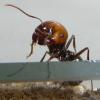
And here she is-
worker number 8!
![]()
And the next girls are already in the pipeline.
They also appear to be happy with my feeding- even if I see them hardly outside the tube.

And then there were 10!
Well, we are growing. Slowly, but surely.
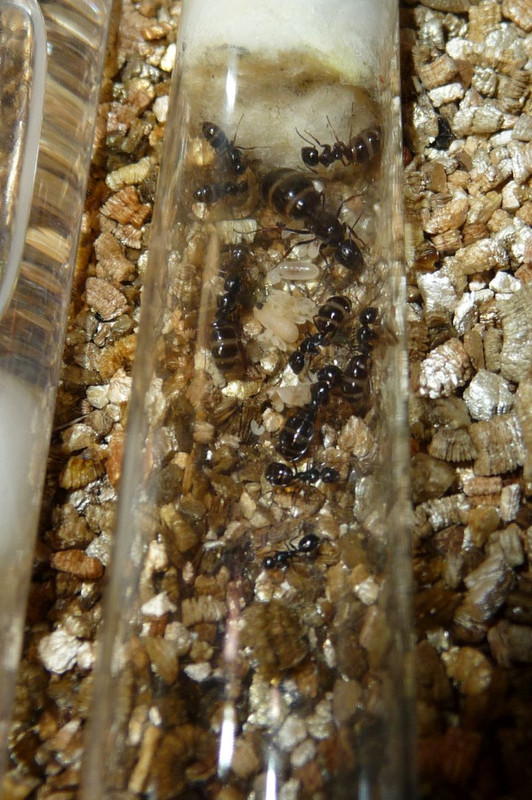
This small colony is still producing eggs and larvae.... must have been the part 2 weeks which had some very hot days.
Since it will now become cooler from now on (autumn is coming), these girls will probably slow down, since Camponotus are on a biological clock for their winter rest period.
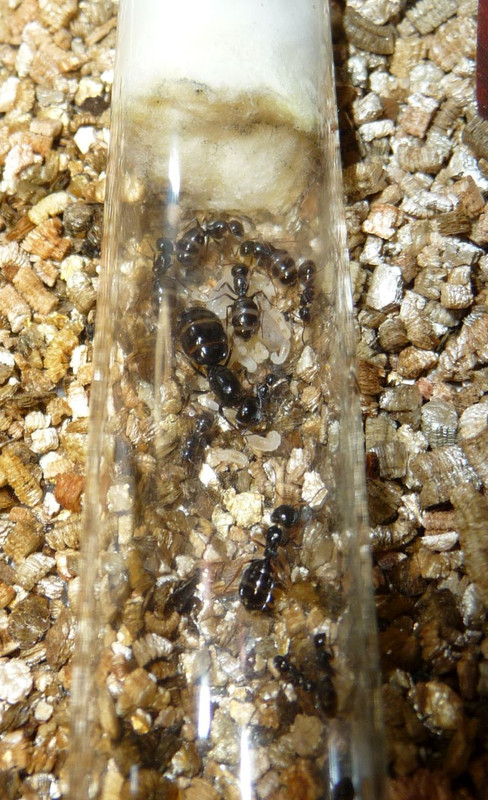
And I have now 11 workers.
One of them was out foraging today.
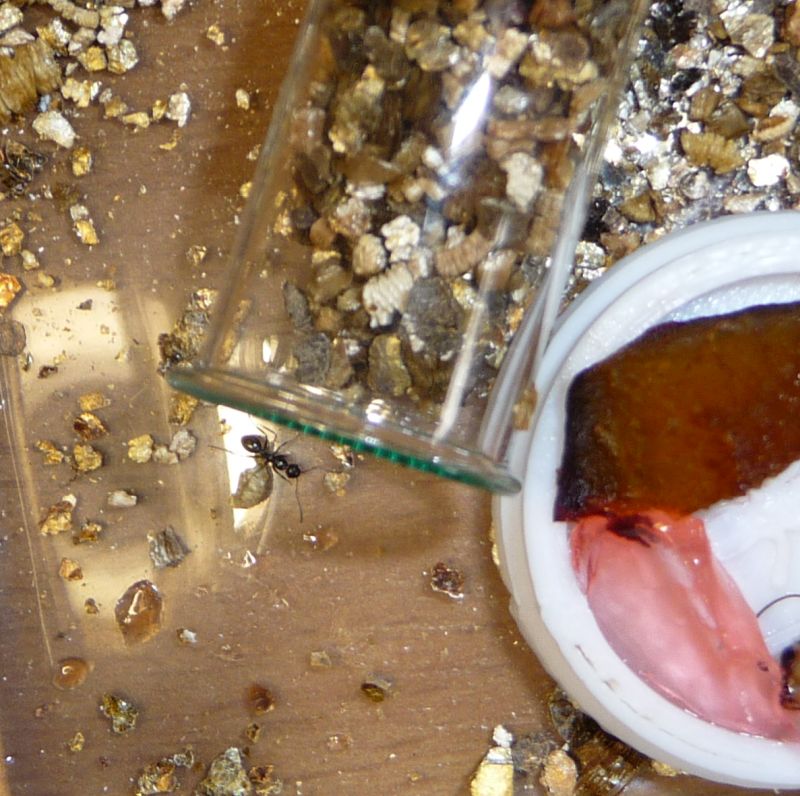
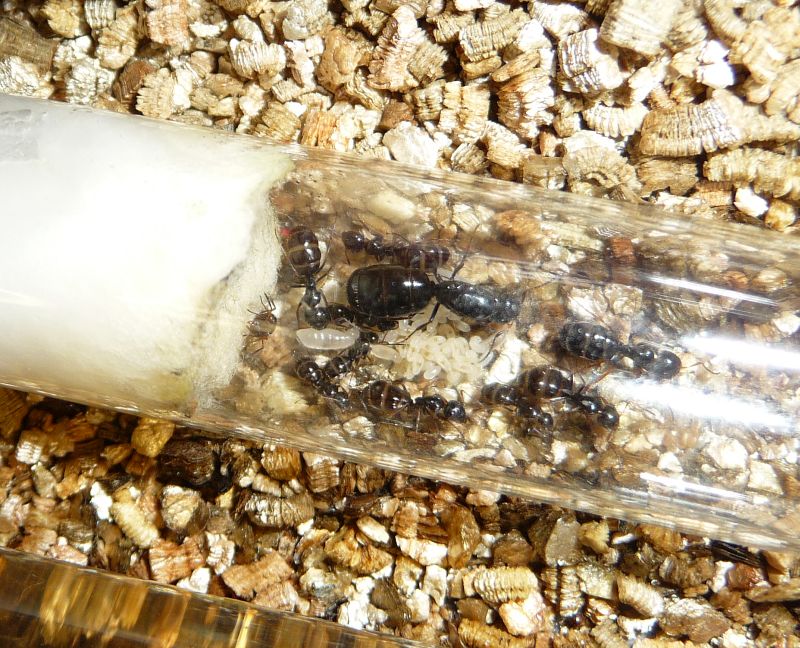
These girls are still going strong.
Today I counted 13 workers!
And there are still plenty of larvae.
No sign yet of them slowing down for autumn / winter, but I expect this will happen when it will get cooler later this month.
Right now, we still have 30 degrees centigrade hot summer days.
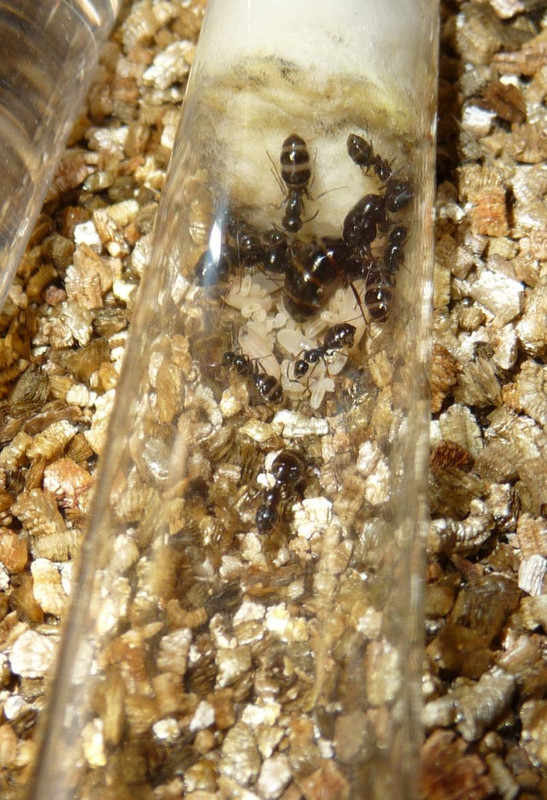

They seem to be growing!
"I am here on Earth, and I am only a speck of sand in the desert, a blade of grass in a field. I am no greater than any one of these busy ants who build for each other's comfort. " - King Solomon
Currently keeping: Myrmecocystus Depilis, Pogonomyrmex Rugosus
Wishlist: Camponotus Ocreatus
These remind me so much of my C. nearcticus.
Is that an easy species to keep?
Do you think I am on track with these girls?
Do you have any thoughts when I could move them over into the fancy XXL Mini Hearth? Someone on Facebook said I should wait till there are 20 workers, but the colony is still so small (even with 13 workers) so I actually think a move would only make sense next spring after hibernation.
And I had honestly not expected the queen to produce so many more larvae now just before autumn!
Edited by Ernteameise, September 10 2023 - 10:55 AM.
Keep them warm and well fed as long as they are producing brood, regardless of what the weather is like outside. You can move them into the THA nest easily next spring by just dumping them out the tube when you wake them up for a diapause. I bet they will take off next year, but don’t expect huge numbers or fast growth.Is that an easy species to keep?
These remind me so much of my C. nearcticus.
Do you think I am on track with these girls?
Do you have any thoughts when I could move them over into the fancy XXL Mini Hearth? Someone on Facebook said I should wait till there are 20 workers, but the colony is still so small (even with 13 workers) so I actually think a move would only make sense next spring after hibernation.
And I had honestly not expected the queen to produce so many more larvae now just before autumn!
Keep them warm and well fed as long as they are producing brood, regardless of what the weather is like outside. You can move them into the THA nest easily next spring by just dumping them out the tube when you wake them up for a diapause. I bet they will take off next year, but don’t expect huge numbers or fast growth.
Is that an easy species to keep?These remind me so much of my C. nearcticus.
Do you think I am on track with these girls?
Do you have any thoughts when I could move them over into the fancy XXL Mini Hearth? Someone on Facebook said I should wait till there are 20 workers, but the colony is still so small (even with 13 workers) so I actually think a move would only make sense next spring after hibernation.
And I had honestly not expected the queen to produce so many more larvae now just before autumn!
Nah, not expecting huge numbers.
This is the reason why I decided on this species, they keep only small colonies of around 200 workers and they are more of a cryptic species.
I do not have a lot of space, and I thought these girls would fit perfectly.
They are also the complete opposite behaviorally to my Messor harvesters who are really "into your face" and much more active.
Having a small colony of shy and timid ants who also forage very differently is a nice contrast.
Right.
I am back from my scuba diving trip in Italy, and I am happy to report that all my girls survived their abandonment.
The Camponotus have a few more puppae, but I do not see any more eggs in there, so I assume they have stopped production for the year?
Probably getting ready for their diapause.

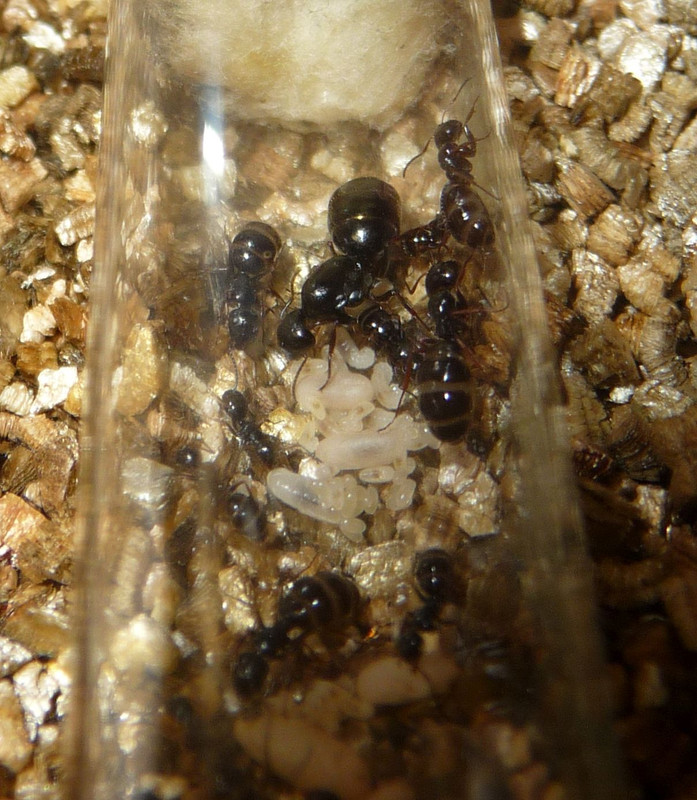
EU is nice. Took a trip to Spain. Probably the most beautiful towns I have ever seen. Not to mention great food. Hope you had fun
Oh it was fun.
Was a trip with my local Scuba Dive club.
Amazing sea-food.
Nice beach to chill on.
And great dive sites- we saw plenty of fish. Big groupers and swarms of Barracudas.
And the cool thing is- on the drive there (I am from Germany) I was able to see 5 countries- Germany, Austria, Liechtenstein, Switzerland and then Italy.
I even had my eye out for ants- sadly the pictures I took were not very good, otherwise I would have shared some.
But the great restaurant directly at the beach where I had dinner there was a colony of Messor. These girls were after the breadcrumbs that fell to the floor (I assume). They were very industrious foraging on the restaurant floor, and they had both medias and majors running about. I think they were Messor capitatus- shiny black.
I think the girls are slowing down for autumn.
There are still 4 minor puppae to hatch, and they also have a few more larvae on the go.
I still hardly, if ever, see them outside their test tube, but since they continue to look well fed, I think they are fine. And eating.

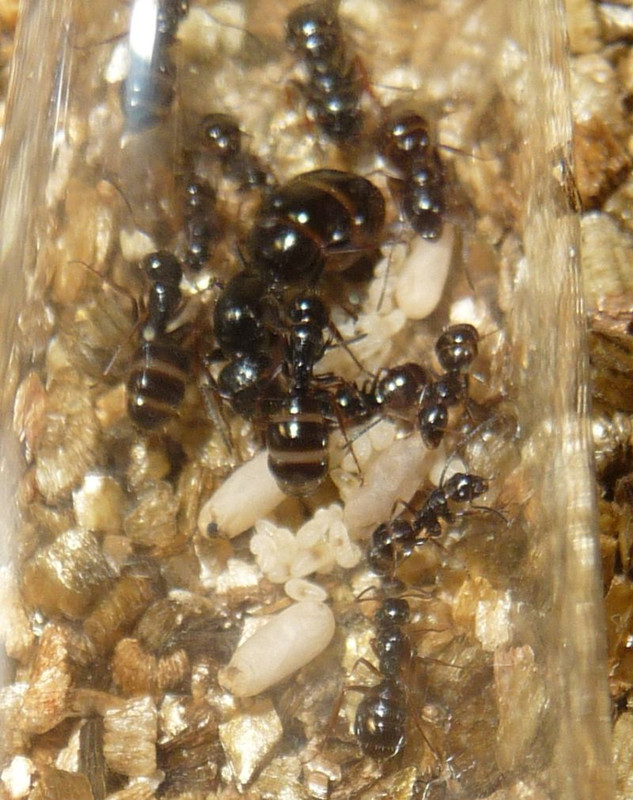
Edited by Ernteameise, October 8 2023 - 7:36 AM.
I’m keeping two Camponotus sp. and they are generally scared and hide in their nests anytime I come around. These days, I can be super sneaky and catch them in their outworlds foraging and hanging out now that they are more established. But, as soon as I make a sound, they run and hide :shrug:
Yeah, this species, Camponotus piceus, are known to be a cryptic species.
They do not forage in groups.
They will not form ant trails and roads.
They wander the lands on their own.
Their nest entrance in the wild is just a tiny hole in the ground.
They are known to live in Germany, but are listed as "rare"- and biologists say they are most likely "rare" because they are so cryptic.
(these girls however are from Portugal, not from Germany)
I knew this.
I actually got this species because it is a complete contrast to my Messor colony which is in your face.
Hurray!
We are now up to 15 workers in this colony!
From looking at them and their brood pile, they do not look as ready to go into diapause as all my other colonies do.
They still have plenty of larvae.
So I have decided to leave them in my living room for the time being.
I live in an upstairs flat that is not well insulated, and I will only be heating the room when I am at home to save on energy.
So the average room temperature will be around 18 degrees (and below during the day).
The heat mat will be off.
Since these girls are from Portugal, I am reasonably confident that this will be sufficient as diapause conditions.
I hope this will work!
The only worry I have is that the cotton in the test tube is getting a bit moldy.
They have a second test tube right next door, and have no moved, so I assume they think this is fine?
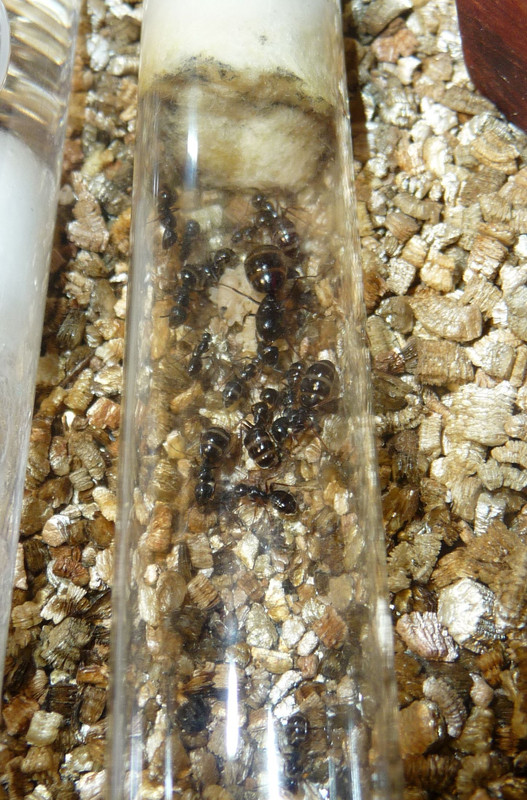
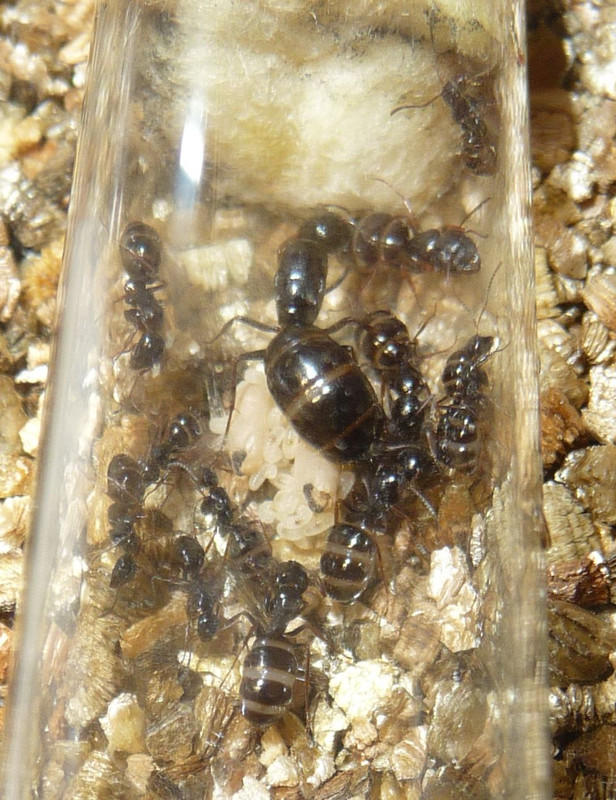
Edited by Ernteameise, October 15 2023 - 2:20 AM.
And today when I checked on the girls, all the puppae had hatched.
So now the colony stands at 19 (!!) workers.
There are still some small larvae- but I think these are the ones that go into arrested development for diapause?
Just in case I offered them another half cricket, but I think they are pretty ready to go to sleep.
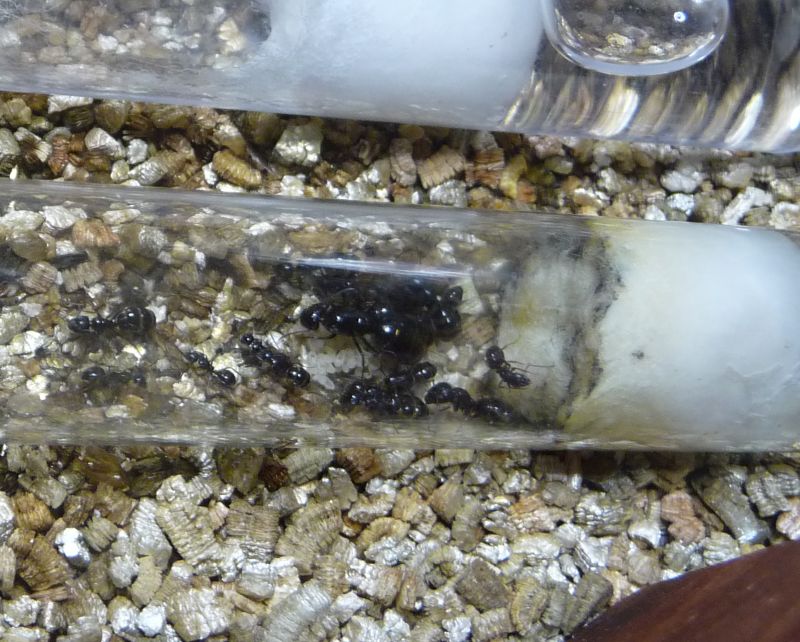
Everybody is pretty much in winter mode.
They are all sitting huddled together, around their pile of hibernating larvae.
The gasters are still full, so I think they still go out on occasion to drink some sunburst nectar.

0 members, 0 guests, 0 anonymous users